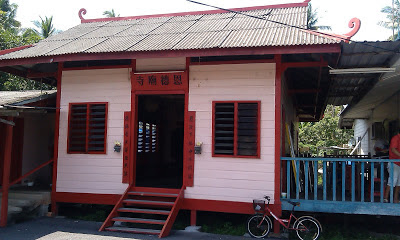Introduction

The sacred places of worship & devotion here concentrate on religious places mostly of the Taoist & Buddhist origin; particularly of the local Chinese traditions. Some other interesting & holy places of worship of other faiths may also be included. More than two hundreds years ago, there was an influx of Chinese immigrants, seeking a better living environment, headed out to various parts of the world, including the South East Asia region, where many of them were from Southern China. They brought with them from their home land the culture, traditions and skills to the new settlement; and one of the first things they did when they settled down on the new land was to build a place of worship to thank for the long safe journey, and subsequently to continue the kind of devotion from home, and to provide spiritual supports and protection in the new challenging environment. The history of Chinese in Sarawak & in many parts of the world can be observed from the his...






